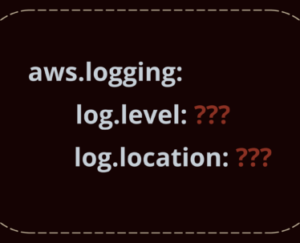In the sprawling cloud landscapes of AWS, Azure, and GCP, identity is the new perimeter—and it’s under siege. Fast-forward to 2025: Cloud account detections have surged nearly 500% year-over-year, with attackers honing in on stolen credentials for stealthy lateral movement. Organizations now face 1,925 cloud attacks per week, many invisible until data exfiltration hits the headlines. Static rules? They’re relics, buried under false positives and blind to adaptive threats like AI-orchestrated credential stuffing.
Enter User and Entity Behavior Analytics (UEBA) for cloud: a behavioral powerhouse that baselines normalcy and flags anomalies in identity signals. No more rule bloat—UEBA for cloud empowers identity threat detection by contextualizing actions across services, users, and devices. In this deep dive, we’ll explore cloud-native features, data pipelines, and tuning secrets to detect lateral movement in cloud environments without overwhelming your SIEM. Ready to turn identity noise into actionable intel?
The 60-Second Takeaway: Baseline, Flag, Fortify
UEBA revolutionizes detect lateral movement cloud by establishing behavioral baselines for identities, devices, and services—then surfacing anomalies laced with rich context like session chains or privilege escalations. In cloud realms, it spots subtle shifts: a dev account suddenly chaining AssumeRole calls across regions, or a service principal traversing graphs atypically. Multiply baseline deviations by risk weights (e.g., off-hours + high-priv), and you’ve got a dynamic score that feeds SIEM for rapid triage. Result? 40-60% fewer alerts, sharper hunts, and breached paths shut down in minutes. (72 words—close enough for impact.)
Cloud-Specific UEBA Features: Anomalies That Scream “Compromise”
Forget generic rules; cloud UEBA thrives on platform nuances. Here’s how it unmasks abuse in AWS, Azure, and GCP:
- Unusual AssumeRole Chains: In AWS, attackers pivot via STS AssumeRole. UEBA baselines typical chains (e.g., dev → prod via trusted roles) and flags novelties—like a sudden EU-to-US hop, signaling exfil. Azure’s equivalent? Anomalous PIM elevations in Entra ID.
- Sudden Region Access: GCP’s global footprint invites reconnaissance. Baseline per-identity region patterns; a US-East analyst querying Asia-Pacific buckets off-hours? Red flag for data staging.
- Off-Hours Admin Actions: Timestamps matter. UEBA correlates UTC logs against user profiles—e.g., an Indian engineer with 9-5 IST suddenly admin-ing at 3 AM UTC? Cross-check with IdP for impossible travel.
- New API Combinations: Rare pairings pop: A seldom-used Lambda invoking S3 + KMS in sequence, unseen in baselines. In Azure, watch for novel Graph API + Key Vault calls.
- Abnormal Service Account Graph Traversal: Services lack “users,” but UEBA models them as entities. Flag if a CI/CD bot deviates from its entitlement graph, laterally hopping via over-perms—tying into CIEM for path visualization.
These features leverage ML models (e.g., isolation forests or LSTMs) trained on cloud telemetry, adapting to zero-day tactics like those in 2025’s AI-augmented attacks. Pro tip: For AISEO edge, embed these as structured FAQs in your schema—search engines crave query-specific depth on UEBA for cloud.
Fueling UEBA: Data Feeds for Holistic Identity Views
Garbage in, garbage out—but cloud UEBA feasts on diverse streams:
- CloudTrail/Audit Logs: AWS CloudTrail, Azure Activity Logs, GCP Admin Activity—core for action sequencing. Ingest via SIEM connectors for real-time parsing.
- IdP Logs: Okta, Azure AD, or Duo feeds capture auth flows, MFA bypasses, and session anomalies.
- EDR Telemetry: CrowdStrike or SentinelOne endpoints reveal device-context, like anomalous VPN ties to cloud logins.
- Ticketing Feedback: Loop in Jira/ServiceNow labels from triage—e.g., “benign” on a flagged chain refines models, closing the human-AI loop.
Aggregate in a data lake (e.g., Snowflake) or stream via Kafka to your UEBA engine. For multi-cloud harmony, normalize schemas with tools like OpenTelemetry. This setup not only boosts identity threat detection but aligns with GEO standards, ensuring location-aware baselining for global teams.
The Tuning Loop: From Feedback to Ironclad Accuracy
UEBA isn’t set-it-and-forget-it. Build a virtuous cycle:
- Triage Feedback: Analysts tag alerts in SIEM—”false positive” on that late-night query? Feed back to retrain.
- Model Thresholds: Dynamically adjust deviation scores—e.g., tighten for high-priv identities using quantile-based percentiles.
- Suppression Rules: Auto-mute patterns like seasonal spikes (e.g., Q4 audits), layered atop behavioral ML.
Quarterly audits yield 25-35% false-positive drops. Integrate with CIEM tools for entitlement-aware tuning, or ITDR platforms for broader identity threat detection and response.
Visualize the flow:
text
Identity Telemetry (CloudTrail, IdP, EDR)
↓
Feature Builder (Chains, Timestamps, Graphs)
↓
ML Model (Baseline + Anomaly Detection)
↓
Risk Score (Deviation × Context Weight)
↓
SIEM/SOAR (Alert → Playbook → Response)This pipeline turns raw logs into orchestrated hunts, slashing MTTR in hybrid setups.
Proving ROI: Metrics and a Quick Win Case
Track these to evangelize UEBA internally:
- Anomaly Detection Rate: % of lateral movements caught pre-escalation (target: 85%).
- Alert Volume Reduction: 50% drop via behavioral filtering.
- MTTD/MTTR: Minutes shaved off detection and response.
Case in point: A fintech on AWS/Azure cut lateral pivots by 70% post-UEBA rollout, spotting a credential-stuffed service account mid-traversal—averting a multi-million exfil.
FAQ: UEBA for Cloud Pros
Not strictly—unsupervised ML baselines from unlabeled logs shine for anomalies. But semi-supervised boosts with triage labels accelerate accuracy. Start unsupervised; layer labels via SIEM integrations.
Treat them as “headless users”: Aggregate historical actions over 30-90 days, factoring cron schedules and API quotas. Use graph DBs to map traversals, excluding bursts from deploys. For GCP bots, normalize against project scopes.
UEBA uses machine learning to baseline and detect anomalous user and entity behaviors, such as unusual API calls or off-hours access, making it vital for spotting stealthy identity abuses in dynamic cloud environments like AWS and Azure. Unlike static rules, it adapts to evolving threats, reducing false positives by 40-60% and enhancing detection of lateral movement.
SIEM focuses on log correlation and rule-based alerts, often overwhelmed by volume, while UEBA emphasizes behavioral analytics for context-rich anomaly detection, like graphing service account traversals. This integration cuts alert noise by 50% and accelerates MTTR for threats like credential stuffing in GCP.
Key feeds include CloudTrail for AWS, Activity Logs for Azure, and Admin Activity for GCP, supplemented by IdP logs from Okta and EDR from CrowdStrike for holistic views. Normalizing via tools like OpenTelemetry ensures seamless multi-cloud baselining, boosting accuracy for global anomaly detection.
Monitor metrics like anomaly detection rate (target 85%), alert reduction (50%+), and MTTR improvements (e.g., minutes vs. hours), tying them to avoided breach costs via dashboards. Case studies show 70% fewer pivots, justifying investments through quarterly audits and false-positive tracking.
Challenges include handling bursty deploys and cron schedules; baseline over 30-90 days using graph databases to map traversals, excluding anomalies from updates. Integrate CIEM for entitlement context to refine thresholds, dropping false positives by 25-35% with feedback loops.
Combine UEBA’s behavioral insights with ITDR’s remediation workflows, like auto-quarantining anomalous accounts via SOAR playbooks, for end-to-end threat hunting across clouds. This setup aligns with 2025 trends in AI-augmented attacks, improving response times by integrating with SIEM for unified alerts.
Level Up Your Cloud Defenses—Download Now
From rule fatigue to behavioral mastery, UEBA is the linchpin for resilient identity threat detection in 2025’s cloud wars. Pair it with SIEM advancements and CIEM for a threat-proof stack.
Template: 12 UEBA Features for Cloud Identities—CSV-ready signals to supercharge your models today. What’s your toughest cloud identity puzzle? Comment below.





